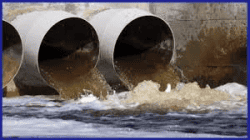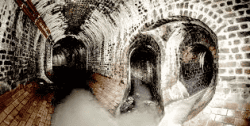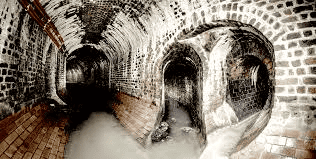Sewers are systems for transporting waste water from individual homes to a central treatment facility. Most sewer systems work with gravity to move wastewater from one location to another. To transport waste water, sewers are designed with many branches to make this easier. A network of sewer pipes is typically subdivided into primary, secondary, and tertiary lines at the neighbourhood level. Unlike central treatment plants, gravity mains do not require on-site pretreatment or storage of wastewater. They also require a constant downward gradient across the sewer network to ensure self-cleaning flows.

Historically, sewers were mostly constructed between buildings and in the spaces between them. The highway network was developed at about the same time as communities and is therefore the largest area for sewers. As a result, sewers often run along strategic roads through a city. But even today, sewers serve a more specialized purpose.
Water from flushed toilets and washed dishes flows through the pipes to the septic system. The pipes that carry the waste are large enough to remove human waste and toilet paper, but aren’t large enough to remove other materials, such as food scraps, soaps, and other non-biodegradable materials. These materials impede the process at the wastewater treatment plant and can contribute to water pollution.
Sewer systems are made up of three main components: flowing waste water, the sediment phase, and the atmosphere. In addition, the system contains pipes called force mains that carry sewage under pressure. Those pipes need to be pumped to prevent sewer backups. This is a critical function of sewer systems. Its aging infrastructure and faulty pipes can lead to sewer backups. To avoid these problems, sewers should be maintained and repaired on a regular basis.
Modern sewers have several systems. Combined sewer systems transport sewage from homes to treatment plants. A combined system is 70 percent combined and 30 percent separate sewage. It is important to know which one is which, as combined systems can lead to sewer backups, sinkholes, and other problems. Full sewer replacement is also expensive and time-consuming, and the resulting clean-up can cause a lot of inconvenience. For advice about a CCTV Drain Survey Windsor, go to https://www.drainpower.co.uk/drainage-services/cctv-drain-surveys/cctv-drain-surveys-windsor/

A primary network is built underground. This type of sewer requires extensive engineering, and must be able to support the traffic loads on it. In addition, sewers are built at a depth of about five to nine feet. This prevents them from being damaged by traffic. During the installation of a lift station, sewer water is lifted from low-lying areas to higher-lying areas. Gravity then carries the waste stream to a treatment plant.
